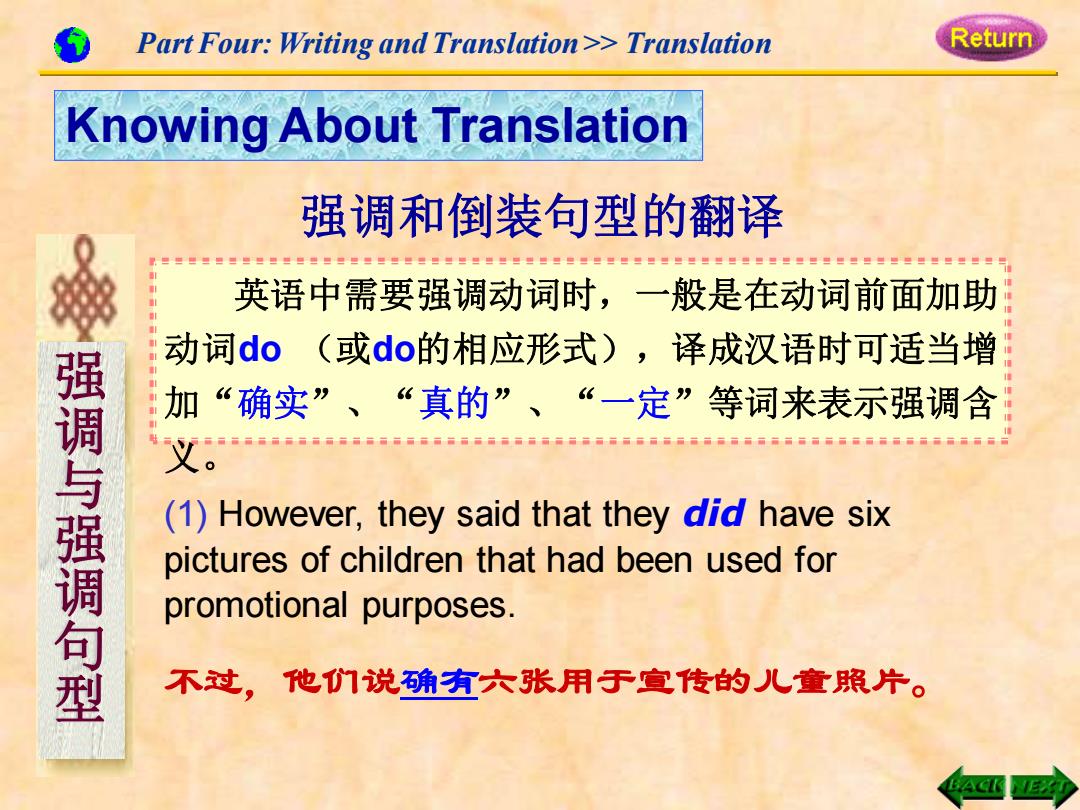
Part Four:Writing and Translation>>Translation Return Knowing About Translation 强调和倒装句型的翻译 英语中需要强调动词时,一般是在动词前面加助 动词do(或do的相应形式),译成汉语时可适当增 加“确实”、“真的”、“一定”等词来表示强调含 强调与强调句型 义 (1)However,they said that they did have six pictures of children that had been used for promotional purposes. 不过,他们说确有六张用于宣传的儿童照片
(1) However, they said that they did have six pictures of children that had been used for promotional purposes. 不过,他们说确有六张用于宣传的儿童照片。 Knowing About Translation Part Four: Writing and Translation >> Translation 强 调 与 强 调 句 型 英语中需要强调动词时,一般是在动词前面加助 动词do (或do的相应形式),译成汉语时可适当增 加“确实” 、 “真的” 、 “一定”等词来表示强调含 义。 强调和倒装句型的翻译
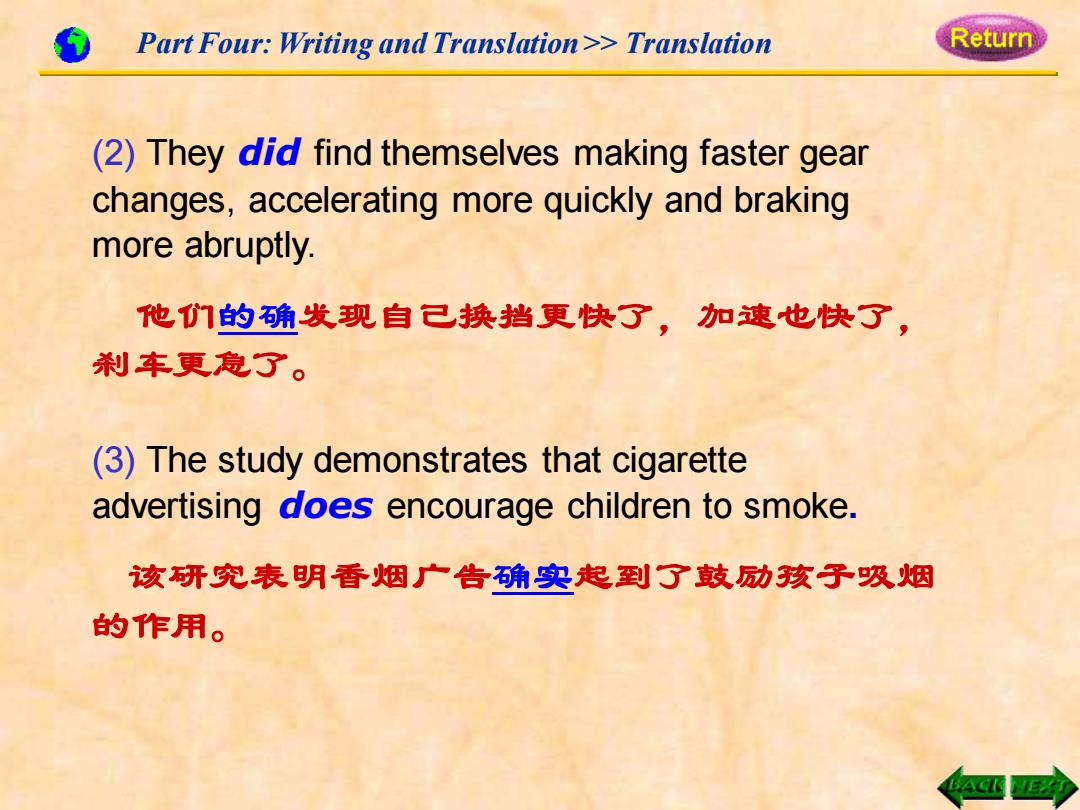
Part Four:Writing and Translation>>Translation Return (2)They did find themselves making faster gear changes,accelerating more quickly and braking more abruptly. 他们的确发现自己换挡更快了,加速也快了, 刹车更急了。 (3)The study demonstrates that cigarette advertising does encourage children to smoke. 该研究表明香烟广告确实起到了鼓动孩子吸烟 的作用
Part Four: Writing and Translation >> Translation (3) The study demonstrates that cigarette advertising does encourage children to smoke. 该研究表明香烟广告确实起到了鼓励孩子吸烟 的作用。 (2) They did find themselves making faster gear changes, accelerating more quickly and braking more abruptly. 他们的确发现自己换挡更快了,加速也快了, 刹车更急了
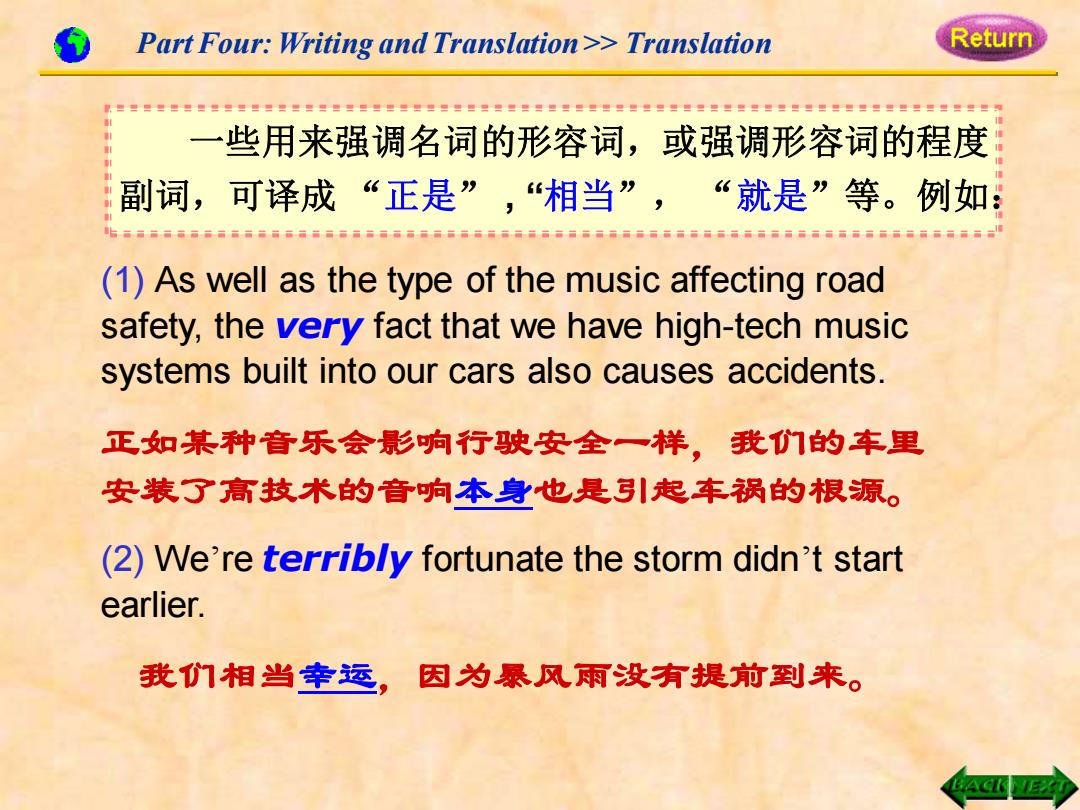
Part Four:Writing and Translation >Translation Return 些用来强调名词的形容词,或强调形容词的程度 副词,可译成“正是”,“相当”,“就是”等。例如 (1)As well as the type of the music affecting road safety,the very fact that we have high-tech music systems built into our cars also causes accidents. 正如某种音乐会影响行驶安全一样,我们的车里 安装了高技术的音响本身也是引起车祸的根源。 (2)We're terribly fortunate the storm didn't start earlier. 我们相当幸运, 因为暴风雨没有提前到来。 A
Part Four: Writing and Translation >> Translation 一些用来强调名词的形容词,或强调形容词的程度 副词,可译成 “正是” , “相当” , “就是”等。例如: (1) As well as the type of the music affecting road safety, the very fact that we have high-tech music systems built into our cars also causes accidents. 正如某种音乐会影响行驶安全一样,我们的车里 安装了高技术的音响本身也是引起车祸的根源。 (2) We’re terribly fortunate the storm didn’t start earlier. 我们相当幸运,因为暴风雨没有提前到来
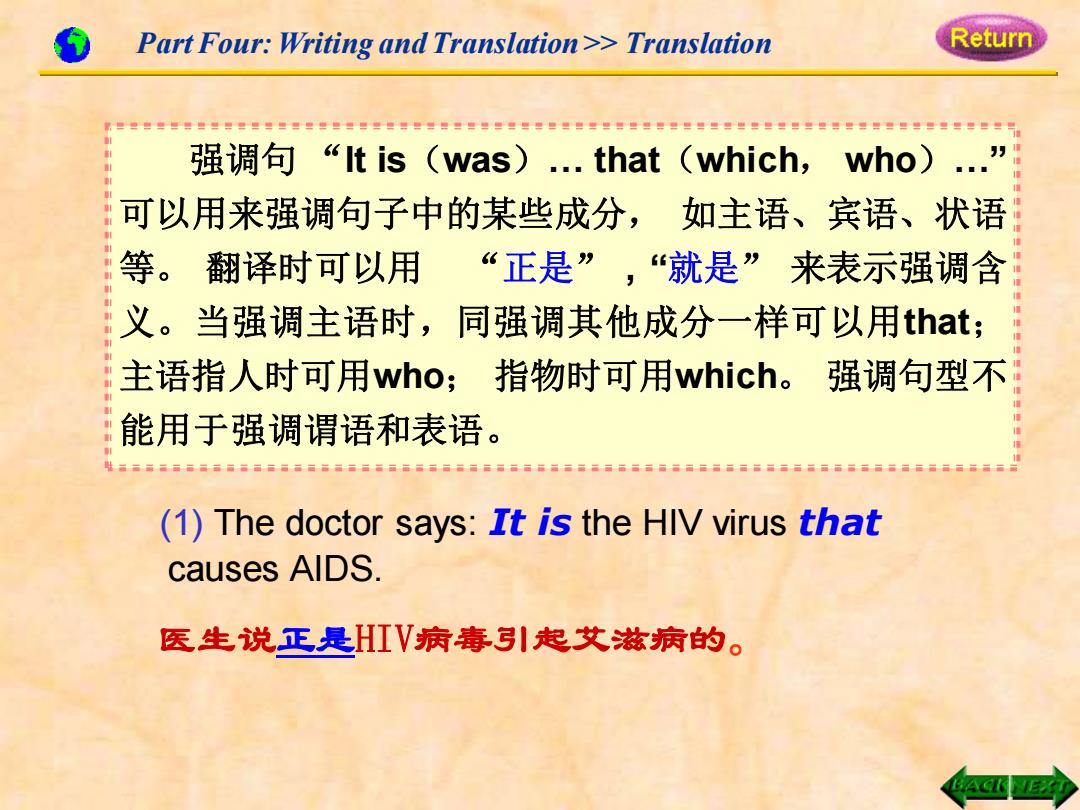
Part Four:Writing and Translation>>Translation Return 强调句“tis(was).that (which, who) 可以用来强调句子中的某些成分,如主语、宾语、状语 等。 翻译时可以用 “正是”,“就是”来表示强调含 义。当强调主语时,同强调其他成分一样可以用that; 主语指人时可用who;指物时可用which。 强调句型不 能用于强调谓语和表语 (1)The doctor says:It is the HIV virus that causes AlDS. 医生说正是HIV病毒引起艾滋病的。 A匹
Part Four: Writing and Translation >> Translation 强调句 “It is(was)… that(which, who)…” 可以用来强调句子中的某些成分, 如主语、宾语、状语 等。 翻译时可以用 “正是” , “就是” 来表示强调含 义。当强调主语时,同强调其他成分一样可以用that; 主语指人时可用who; 指物时可用which。 强调句型不 能用于强调谓语和表语。 (1) The doctor says: It is the HIV virus that causes AIDS. 医生说正是HIV病毒引起艾滋病的
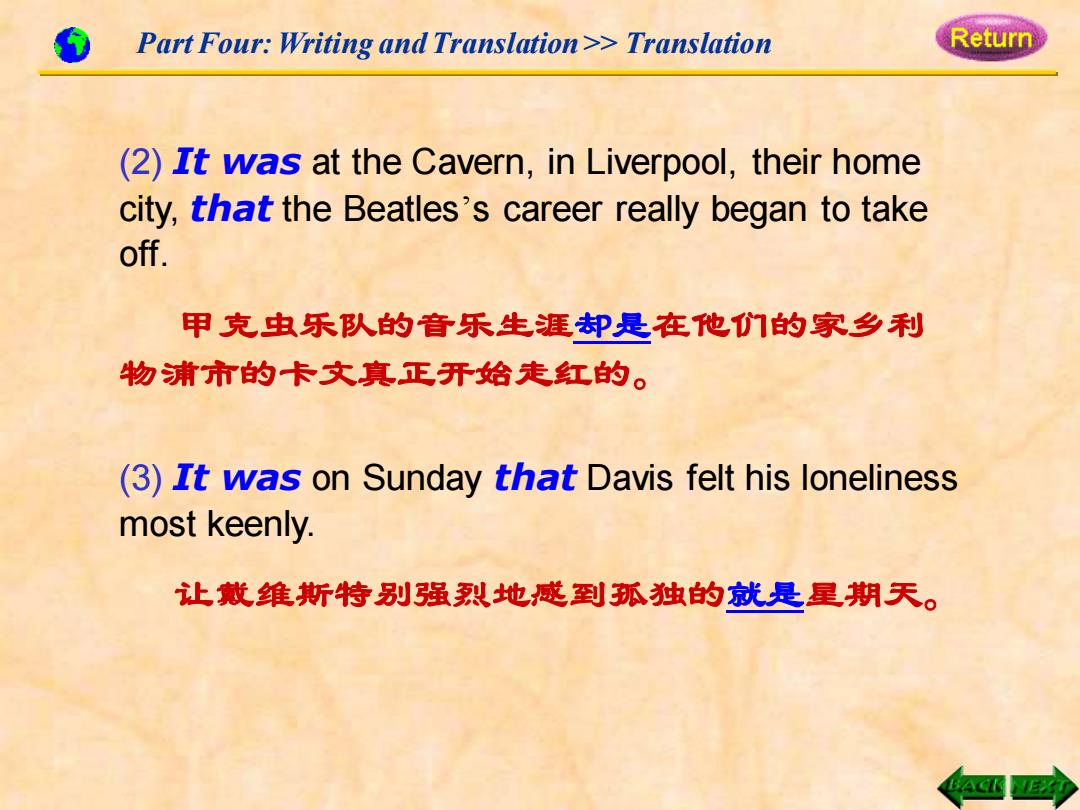
Part Four:Writing and Translation>>Translation Return (2)It was at the Cavern,in Liverpool,their home city,that the Beatles's career really began to take off. 甲克虫乐队的音乐生涯却是在他们的家乡利 物浦市的卡文真正开始走红的。 (3)It was on Sunday that Davis felt his loneliness most keenly. 让戴维斯特别强烈地感到孤独的就是星期天
Part Four: Writing and Translation >> Translation (3) It was on Sunday that Davis felt his loneliness most keenly. 让戴维斯特别强烈地感到孤独的就是星期天。 (2) It was at the Cavern, in Liverpool, their home city, that the Beatles’s career really began to take off. 甲克虫乐队的音乐生涯却是在他们的家乡利 物浦市的卡文真正开始走红的